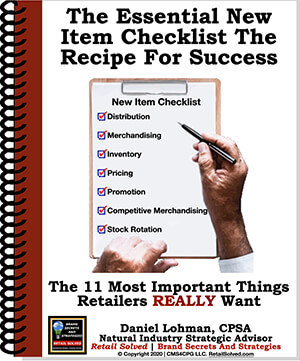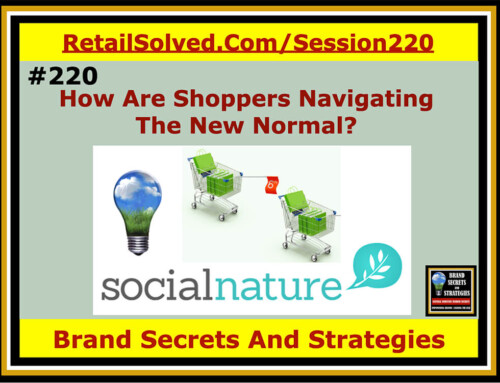You have most likely heard about the 4 P’s; planning, promotion, placement, price. The most important part of any effective strategy is the shopper or people. The 5th “P” is the people! The 5P’s are the cornerstone of any solid retail strategy. This is true for every brand and the retailer. Brands and retailers need to work closely together to develop strategies that focus first on the shopper. The perfect balance of the 5P’s will build consumer loyalty, increase consumer traffic in your store, grow sales, and help you remain competitive in any economy.
Shoppers are inundated by offers from competing retailers and brands every day. Most shoppers cherry-pick specific retailers to fill only a portion of their shopping list. The goal for every retailer is to keep them shopping at your store instead of your competitor. A solid strategy must include addressing as many of the shoppers needs as possible. The 5P's can help you better focus on this objective.
People
This is frequently the most overlooked by most retailers. Shopper-focused strategies will highlight your commitment to being a leader in the market. Some retailers make the mistake of assuming they know what their customers want without carefully listening to them. Most retailers focus on selling the items on their shelves more than selling us the items we want to buy. This is where brands can help retailers focus on meeting their customer’s needs.
Pricing
Pricing can be one of the more difficult strategies to master. A high price point might encourage a consumer to shop your competition while a low price point dilutes your brand and gives away valuable margin. Effective pricing strategies should help you remain competitive in your market while inviting consumers to purchase more of the items on their list in your store. No one ever wins the pricing game. Some retailers like to play the game continually by offering the lowest price in the market. This is a difficult strategy to maintain for small retailers and it’s very expensive for the large stores. Shoppers will pay a premium if they see the value of your products. Shoppers want a quality product at a fair price.
Placement
Product placement and merchandising are critical. Consumers want stores that are friendly and easy to shop. Products should be grouped together by like items. Segmenting is a great way to break up the category to make it easier to shop. Segments should be grouped by the way consumers shop the category; by style, quality, color, price, scent, type, etc. For example, personal care consumers may find it easier to shop the category if it’s segmented by super-premium, premium, and economy.
Another component of product placement is the assortment. Shoppers want the top items available in the market in addition to the specialty or niche items that meet their needs. The goal is to have a broad assortment that appeals to shoppers without too many duplicate items. Shoppers make judgments about retailers based upon their product assortments. Too few items and they perceive the assortment to be poor while too many items tend to confuse shoppers. The proper mix should include a balance of the top selling items as well as specialty or niche items that differentiate your store from the competition.
Product
Customers shop retailers to get the items on their shopping list. Having the right products is what keeps them coming back. Branded products are the key to this strategy because they offer the promise of quality, they bring new innovation into the category, and are designed to meet specific customer needs. Customers shop branded items first before considering private label items. For this reason, retailers should have strong brand strategies that encourage customers to shop their store instead of the competition.
Private label products, or store-brands, provide additional choice for consumers based primarily on lower price points. Private label items should be merchandised next to national brands to help shoppers compare them to branded items. Shoppers typically choose private label at the shelf.
Promotion
Promotions create excitement in the category. Effective promotion strategies highlight the retailer’s commitment to being the leader in a market or category. Promotions include a combination of pricing and merchandising strategies that encourage a new customer to try products. Every promotional strategy should be focused on the goal of increasing shopper traffic in the category and store.
Retailers cannot be expected to be an expert in every category in their stores. Brands need to help retailers better manage their categories to grow sustainable sales.
Dan's mission is “Empowering Brands and Raising The Bar”. His weekly newsletter, educational podcast and training courses have become an invaluable resource for brands and retailers seeking a competitive advantage. To learn more or connect with Dan, visit BrandSecretsandStrategies.com or email dan@cms4cpg.com.
©2018 Brand Secrets and Strategies. All rights reserved.

Want A Competitive Edge? The Recipe For Success
New product innovation is the lifeblood of every brand. New products fuel sustainable growth, attract new shoppers and increase brand awareness. Know the critical steps to get your product on more retailer’s shelves and into the hands of more shoppers.
Empowering Brands | Raising The Bar
Ever wish you just had a roadmap? Well, now you do!
Don’t miss out on all of these FREE RESOURCES (strategic downloadable guides, podcast episodes, list of questions you need to be asking, and know the answers to, the weekly newsletter, articles, and tips of the week. You will also receive access to quick and easy online courses that teach you how to get your brand on the shelf, expand distribution, understand what retailers REALLY want, and address your most pressing challenges and questions.
All tools that you can use, AT NO CHARGE TO YOU, to save you valuable time and money and grow your sales today!
Image is the property of CMS4CPG LLC, distribution or reproduction is expressively prohibited.





